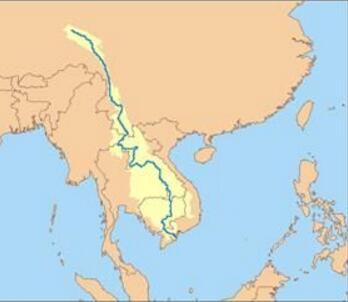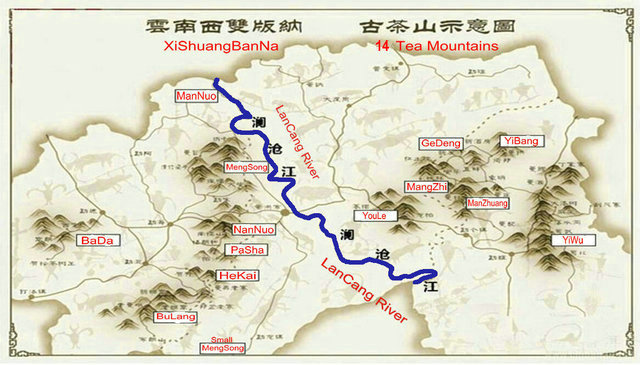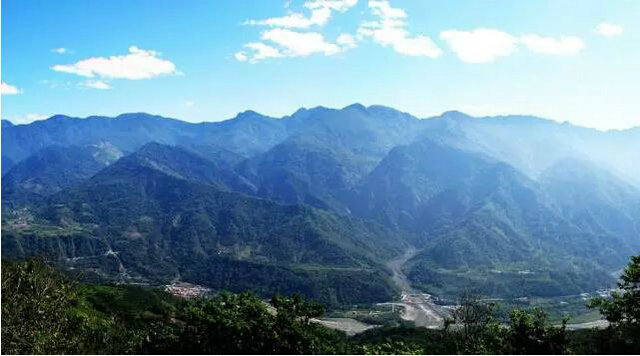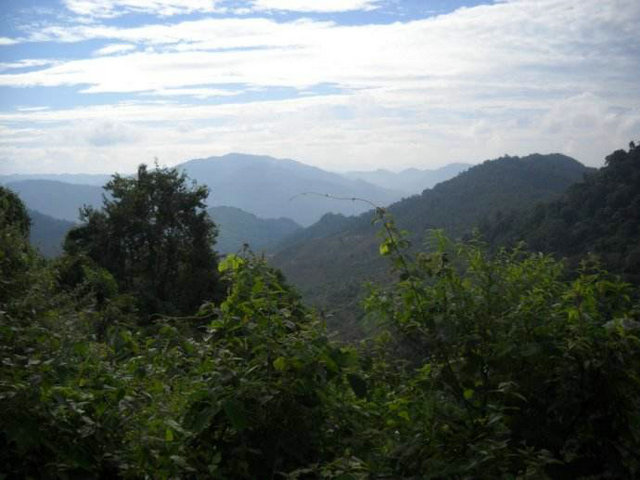Exploring the 14 Big Puerh Tea Mountains in XiShuangBanNa, YunNan, China (1/2)
If time allows, I plan to revisit and update this blog post, originally written four years ago.
In today's discussion, we'll delve deeper into the renowned 'Six Big Puerh Tea Mountains' and expand our exploration to include the 'Fourteen Big Tea Mountains,' as mentioned in the title. Are you curious about the numerous other tea mountains, totaling over a hundred? We'll explore them, one at a time.
A picture often speaks louder than words, so to aid in understanding, let's start with the first one: (Pic source: China Puer Tea Network)
First and foremost, let's introduce a key geographical feature central to our discussion: the LanCang River (澜沧江).
Unfamiliar with the LanCang River? Let’s allow the river to introduce itself.
LanCang River Speaks: 'Hello, everyone. Spanning a length of 4909 km, my journey begins in Tibet, China, and culminates at Ho Chi Minh City in Vietnam, where I flow into the South China Sea.
In China, I am known as the LanCang River, but as I traverse through Southeast Asia, I am referred to as the Mekong River.'
Pic source: Interactive Encyclopedia.
 |
Unfamiliar with the Mekong River? I recommend a quick search for 'BBC Two - The Mekong River with Sue Perkins' for an enlightening view. Remember, I am the seventh-longest river in the world, the third-longest in Asia, and the most extensive in Southeast Asia. Farewell for now!
Now, let's return to our main topic. To the east of the LanCang River, also known as the Mekong, lie the 'Old Six Tea Mountains.' On the river's western side are the 'New Eight Big Tea Mountains.'
There's some debate about the most notable tea mountains, with some arguing that the six most significant ones are west of the LanCang River.
While there's no official definition, let's explore why we recognize eight mountains in this region, not just six.
Despite their proximity, the soil's trace elements vary significantly among these mountains, influencing the distinct taste profiles of their tea leaves.
From east to west:
- YiWu, which translates to 'Where the Snake Woman Lives,' as depicted below (pic source: http://doc.qkzz.net)
Tea from this region is characterized by its minimal bitterness and a high fragrance reminiscent of orchids.
The finest quality tea leaves are harvested at the end of the Spring season, just before the monsoon begins in XiShuangBanNa.
These leaves are known for their quick and robust Huigan (returning sweetness) and the abundant saliva production they stimulate.
- YiBang, which translates to 'The Place with Tea Trees and a Water Well'
The tea trees in YiBang are of the arbor leaflet species. The tea is noted for its immediate Huigan (returning sweetness) and the abundant saliva it produces.
The tea soup is a bright yellow color, reminiscent of bee wax, and carries a fragrance similar to orchids.
Historically, YiBang was a primary source of 'GongCha,' a high-quality tea reserved exclusively for royal consumption.
Common people could only enjoy puerh tea from a nearby mountain with a similar taste profile to YiBang's. This leads us to the next mountain:
- ManZhuan, which translates to 'Big Village'
The tea trees in ManZhuang are from the arbor big leaf species.
The tea they produce is distinctly bitter, yet it's balanced by a swift and robust Huigan (returning sweetness), accompanied by a substantial amount of saliva production.
The fragrance of this tea resembles that of plum flowers, and the tea soup is a deep yellow in color.
- GeDeng, which translates to 'High Land'
GeDeng's tea leaves strike a unique balance between the large leaves typical of YiWu and the smaller leaves of YiBang.
The tea exhibits a subtle bitterness, complemented by a strong Huigan (returning sweetness). It quickly stimulates saliva production.
The fragrance of the tea is light and crisp, and the tea soup boasts a deep orange color.
- MangZhi, which translates to 'Where KongMing ZhuGe Buried Copper'
MangZhi's tea leaves strike a unique balance between the larger and smaller leaves, akin to those of GeDeng.
The tea is characterized by a pronounced bitterness, which swiftly gives way to a pleasant aftertaste (huigan).
Its fragrance is subtle, and the tea soup boasts a deep orange hue. While it shares many similarities with GeDeng tea, discerning drinkers will notice nuanced differences, especially with repeated tastings.
The name 'YouLe' is historically linked to the YouLe ethnic group, now known as the JiNuo. Although the community's name has evolved over time, the mountain where this tea is grown retains the ancient moniker of YouLe.
YouLe tea, known for its large leaves, is distinguished by a pronounced, heavy bitterness.
This bitterness quickly transitions into a swift huigan (pleasant aftertaste), though the body of the tea soup tends to be on the lighter side.
The fragrance of YouLe tea is moderate, and its tea soup displays a light orange color.
These characteristics give YouLe tea its unique identity, distinguishing it from other varieties in both flavor and appearance.








